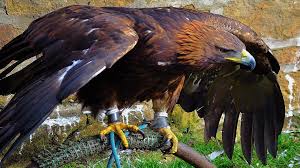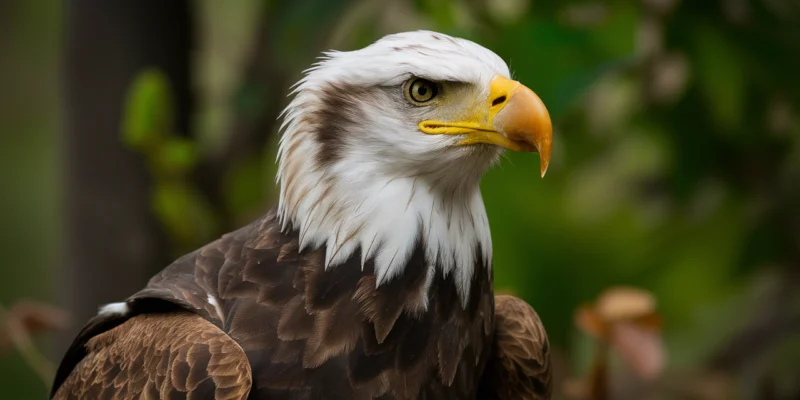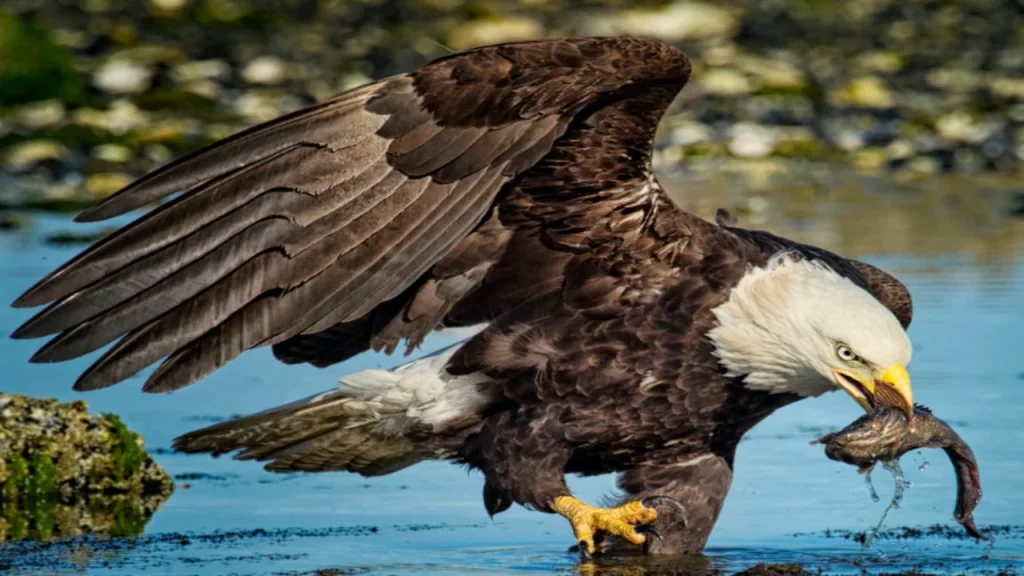The Hancock Bird is a captivating subject for bird enthusiasts and conservationists. Known for its distinct behaviors and ecological significance, studying this bird offers valuable insights into avian life and the importance of conservation efforts. This article delves into various aspects of the Hancock Bird, from its unique characteristics to its conservation status.

Origins and Historical Significance
Origins of the Hancock Bird Name
The term Hancock Bird is not a scientific classification but rather a colloquial term associated with the efforts of wildlife conservationist David Hancock. His work has been instrumental in studying and protecting various bird species, particularly raptors and eagles. The name “Hancock Bird” honors his contributions to avian conservation.
Historical Context
David Hancock’s pioneering use of live streaming cams and other technologies has revolutionized bird observation. His efforts have brought attention to the importance of protecting bird habitats and have provided invaluable data for conservation research.
Cultural and Symbolic Importance
Cultural Significance
Hancock Birds, especially raptors, are often symbols of power and freedom. Their majestic appearance and soaring flight have inspired many cultural representations, from myths and legends to modern art and literature. These birds play a vital role in cultural heritage, symbolizing various human ideals and aspirations.
Symbolism in Various Cultures
Different cultures associate Hancock Birds with strength and resilience. For example, eagles are revered in many indigenous cultures as spiritual symbols. The Hancock Bird, as a representative of these majestic creatures, embodies similar values and is celebrated for its beauty and significance.

Habitat and Adaptation
Natural Habitats
Hancock Birds thrive in a “variety of habitats“, ranging from from dense forests to open fields. They thrive in regions that offer plentiful food and nesting opportunities, such as coastal areas, wetlands, and mountainous regions. Their adaptability to different habitats is a testament to their resilience.
Geographic Distribution
Primarily found in North America, Hancock Birds are especially common in areas like British Columbia, where extensive conservation efforts have been undertaken. Their distribution depends on factors like food availability and habitat suitability, which conservationists continuously monitor.
Unique Behaviors and Characteristics
Distinctive Traits
Hancock Birds are known for their complex behaviors, including unique mating rituals and vocalizations. During the breeding season, these birds engage in elaborate courtship displays, including aerial acrobatics and intricate dances. These behaviors are crucial for mating success and establishing territories.
Feeding and Nesting Habits
As opportunistic feeders, Hancock Birds consume a varied diet that includes fish, small mammals, and other birds. Their nesting habits are equally fascinating, with nests often built in high, secure locations to protect young ones from predators. Both parents typically share responsibilities in caring for the chicks.

Migration and Movement
Seasonal Migration Patterns
Hancock Birds undertake extensive migrations, often traveling great distances to reach suitable breeding or wintering grounds. These migrations are influenced by seasonal changes and are essential for accessing resources necessary for survival.
Tracking and Monitoring
Modern technologies like GPS and satellite telemetry have made it possible to track the migration patterns of Hancock Birds accurately. This data is crucial for understanding their movements and for planning conservation strategies.
Conservation Efforts and Challenges
Current Conservation Status
The conservation status of Hancock Birds varies, with some species facing significant threats due to habitat loss and environmental changes. Ongoing efforts include habitat restoration and legal protections aimed at safeguarding these birds.
Conservation Initiatives
Organizations such as the Hancock Wildlife Foundation play a pivotal role in protecting Hancock Birds. These initiatives include establishing protected areas, enforcing anti-poaching laws, and promoting public awareness. Success stories in conservation highlight the positive impact of these efforts, demonstrating the potential for reversing population declines.
Environmental Impacts and Solutions
Effects of Environmental Changes
Climate change and habitat degradation pose severe threats to Hancock Birds. Changes in temperature and weather patterns can disrupt migration routes, alter food availability, and affect breeding success.
Mitigation Efforts
Mitigation strategies focus on habitat restoration, pollution control, and climate adaptation measures. Community involvement and public education are also crucial, as they foster a collective responsibility towards conservation.
Technological Advancements in Study
Use of Technology
Live cams and streaming technologies have revolutionized the study of Hancock Birds. These tools allow for real-time observation, providing valuable insights into their behaviors and interactions without disturbing their natural habitats.
Citizen Science and Public
science initiatives encourage public participation in bird monitoring. Platforms like eBird enable birdwatchers to share observations, contributing to a broader understanding of Hancock Bird populations. This community engagement is vital for raising awareness and supporting conservation efforts.

Urban Adaptation and Human Interaction
Adaptation to Urban Areas
Hancock Birds have shown remarkable adaptability to urban environments. They are increasingly found in cities, where they exploit new food sources and nesting opportunities. Understanding these adaptations helps in developing strategies for human-wildlife coexistence.
Human-Wildlife Interaction
Interactions between Hancock Birds and humans can be both beneficial and challenging. Public education is key to ensuring that these interactions are safe and positive, promoting a harmonious relationship between urban development and wildlife conservation.
Observing Hancock Birds
Tips for Birdwatchers
To observe Hancock Birds, birdwatchers should familiarize themselves with the birds’ habitats, behaviors, and calls. Early mornings and late afternoons are typically the best times for sightings. Birdwatchers are encouraged to use binoculars and field guides to enhance their experience.
Ideal Locations for Observation
Protected areas, nature reserves, and bird sanctuaries are prime locations for observing Hancock Birds. These environments provide the necessary conditions for the birds to thrive, offering birdwatchers the best chances of sightings.
Educational and Outreach Efforts
Public Education Programs
Educational programs and outreach initiatives are essential for promoting bird conservation. These programs include workshops, webinars, and school visits, aimed at educating the public about Hancock Birds and the importance of preserving their habitats.
Resources for Educators and Communities
Resources such as lesson plans, field guides, and interactive activities help educators and communities engage with bird conservation. These tools are valuable for fostering a love for nature and encouraging stewardship among younger generations.
Read To Know About: Human Gathering Fake
Conclusion
The Hancock Bird is a symbol of the intricate beauty and complexity of the natural world. Understanding its behaviors, habitats, and the challenges it faces is crucial for its conservation. Through dedicated efforts and public engagement, we can ensure the continued presence of these magnificent birds in our ecosystems.
In conclusion, the protection and study of Hancock Birds are essential for preserving biodiversity and maintaining ecological balance. As we continue to learn more about these birds, we must also act to safeguard their future, ensuring that they remain a part of our natural heritage for generations to come.
Frequently Asked Questions (FAQs)
What is the Hancock Bird?
- The Hancock Bird refers to various bird species studied and protected under David Hancock’s conservation initiatives, especially focusing on raptors and eagles.
Where can Hancock Birds be found?
- Hancock Birds are primarily located in North America, particularly in regions like British Columbia, where they have access to food and nesting sites.
What do Hancock Birds eat?
- They have a diverse diet that includes fish, small mammals, and other birds, depending on the availability of these food sources.
What is unique about the Hancock Bird’s mating behavior?
- They perform elaborate courtship displays, including dances and vocalizations, to attract mates and establish their territories.
How do Hancock Birds contribute to their ecosystems?
- They help control smaller animal and insect populations and aid in seed dispersal and pollination.
What are the primary threats to Hancock Birds?
- They face threats from habitat loss, climate change, and human activities, which can lead to food shortages and loss of nesting sites.
How do Hancock Birds adapt to urban environments?
- They exploit new food sources and nesting sites in urban areas, showing resilience and adaptability to different environments.
What conservation efforts are in place for Hancock Birds?
- Conservation efforts include habitat protection, legal measures, and public education, often spearheaded by organizations like the Hancock Wildlife Foundation.
Why are Hancock Birds important in cultural symbolism?
- They symbolize strength and freedom and are often featured in myths, legends, and art, reflecting their majestic nature.
How can the public help protect Hancock Birds?
- The public can participate in citizen science projects, practice eco-friendly behaviors, and raise awareness about the importance of conserving these birds.
